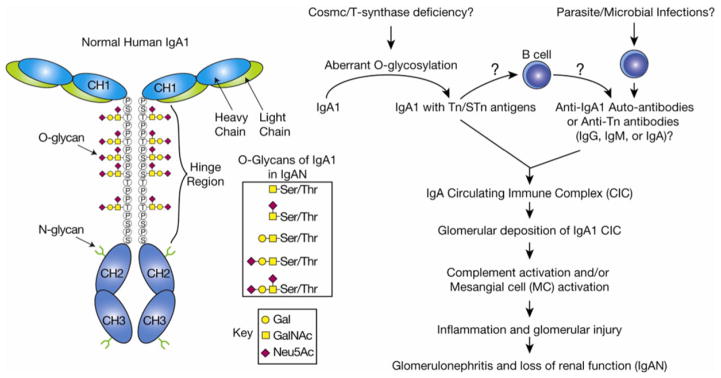Figure 4.
Tn and STn antigens on IgA1 in IgAN. IgA nephropathy (IgAN) is the most common glomerulonephritis and results in renal failure in 20–40% of patients over 25 years of age. Deposition of IgA1 in the glomerular mesangium is thought to drive the disease. Reduced galactose and increased Tn/STn have been observed on IgA1 isolated from renal biopsies of patients. Normal O-glycans in the IgA1 hinge region contain mono- or disialylated core 1 structures. Although the role of Cosmc/T-synthase in IgAN is controversial, a reduction in T-synthase transcript and activity has been observed in B cells isolated from IgAN patients. It is thought that Tn/STn expression could lead to IgA1 aggregation by anti-Tn/STn antibodies or nonimmunologic methods, e.g. by increasing the propensity of IgA1 to self-aggregate. Circulating IgA1 immune complexes deposit in the glomerular mesangium, activating mesangial cells and the complement cascade, which leads to glomerulonephritis and loss of renal function.

